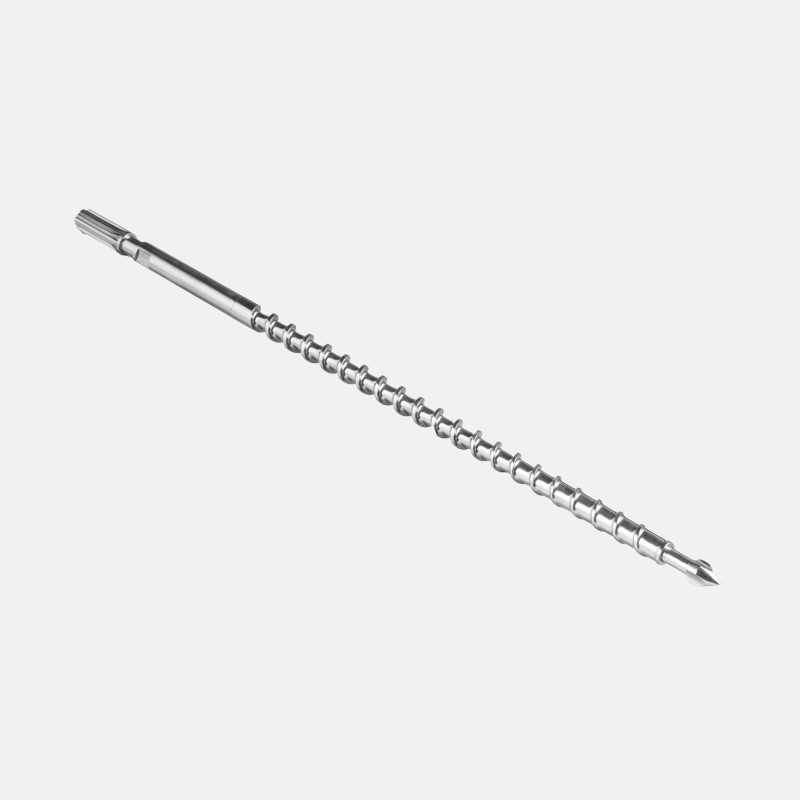Generally,
Nitriding screw barrel is a kind of metal screw and barrel with nitriding treatment, and it has a good performance in wear and corrosion resistance. There are various manufacturing methods to make nitrided screws. It is a cheap treatment method. This kind of screw is used in many countries. In the case of long objects, it may need additional finishing after nitriding.A nitrided screw has a hard surface on the working surface. It can also have a special bimetallic coating on the whole screw matrix. The finished bore is 1.5-3 mm thick, and it has highly accurate radial clearance. The maximum hardness is 70 HRc. It is suitable for plastics extrusion.Depending on the material, the final processing temperature is different.
Halogen-free screw assembly
There are different types of treatments: precision grinding, heat-treatment, hard-chrome electroplating and flame hardening.Using nitriding in screw barrels is one of the simplest and most inexpensive ways to increase the hardness and wear resistance of the screw barrel. The nitriding process replaces galvanizing bluing and other chemical coatings. Depending on the material, the nitriding process can produce a dense layer of steel with a hardness of 60 Rc or higher.The nitriding process also provides a chemically stable layer that is highly resistant to corrosion in water vapor and alkaline solutions. However, the nitrided layer will eventually wear away and the hardness will be lost.For this reason, nitrided steel is not particularly suitable for use in plastic resins.
This is especially true when extruding rigid PVC or certain engineering plastics.Nitriding is performed by either a gas or plasma nitriding process. The final processing temperature depends on the treated material and the case depth.Often overlooked is the need to consider relining for certain screw barrel designs. This is a cost effective solution to maximize the life of your barrel.Relining involves the replacement of the barrel liner which transmits the strain from the rifling to the tube.The best part of this process is that a new barrel can be finished to meet your desired radial clearances.
There are also wear resistant options for the bores of your barrels.A bi-metallic barrel is a composite material that incorporates two metals. These alloys can include nickel-boron, nickel-cobalt, or tungsten-carbide. These materials are suitable for many extrusion applications. They are available with bore sizes from 18 to 254 mm.Typically, a BiMettalic barrel is made by physical bonding a special alloy to the inner surface of a high-quality carbon steel tube. This gives the barrel a hard working surface which can provide good wear and corrosion resistance.During the nitriding process, a hard layer of steel is formed on the working surface. This provides good corrosion resistance and wear resistance. After hardening, the part can be finished by machining and grinding.For some applications, a special bimetallic coating can be applied to the screw barrel. The coating material is used to repair worn parts or to increase the wear resistance of the screw itself. It is also useful in applications where corrosion is a problem.

 English
English 简体中文
简体中文 España
España عربى
عربى








